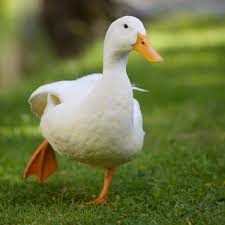Kristina Keneally last Sunday was almost hysterically defensive in trying to shield the NSW Department of Health from blame for the Ruby Princess affair. It is noted that she, among others, enjoyed the largesse of Carnival, as reported in The Australian Financial Review in 2009. And the media does not report all her contacts; therefore it is inconceivable that this dinner was the only contact she has had with what are described as the “queens of the sea”.
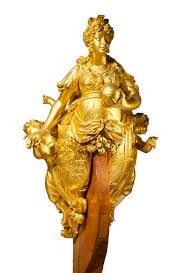
They were dubbed the queens of the sea and the seaboard triumvirate as Carnival Australia chief Ann Sherry and chairman Katie Lahey and Governor-General Quentin Bryce put on a massive party for the launch of P&O Cruises’ new liner, the Pacific Jewel, at Sydney’s overseas passenger terminal on Saturday night.
More than 900 diplomatic, tourism and naval brass plus some serious business heavies hit the deck in the balmy summer weather to watch Bryce do the honours in the traditional naming ceremony.
Among the guests were GPT Group chief Michael Cameron, Deutsche Bank chief Chum Darvall, NSW Premier Kristina Keneally, UBS chief Matthew Grounds, Unicef Australia chief Carolyn Hardy, Telstra chairman Catherine Livingstone, David Jones chairman Bob Savage and head of apparel Colette Garnsey, Garvan Research Foundation director Lyn Gearing and navy fleet commander Rear Admiral Steve Gilmore. Also on board were the liner’s celebrity chef Luke Mangan and designer Alex Perry, who dressed Sherry (unfortunate juxtaposition -ed) and R.M. Williams’ chief Hamish Turner.
From all accounts it was a big night, with an on-deck circus and Australian Idols Stan Walker and Wes Carr. Funds raised went to the Leukaemia Foundation and Special Olympics Australia. And this time – unlike in May, when Sherry and her posse were quarantined on board – there was no swine flu to worry about.
Quite a quarantine force above, Ms Sherry! And this time in 2020 you made sure you were not on board when the virus hit.
Dear Chattie
This is a very personal note which others may find eye glazing. One of my cousins, Carol, put together the letters between the soldier and his sweetheart. They were her grandparents; Charlotte Egan was my aunt.
Andy Campbell, a young farmer, went into battle at Armentières almost as soon as he arrived in France in 1917. The family soon received the news “missing in action, believed killed”.
However,
Military Hospital
Tankerton
29/3/1917
My loving girl,
I suppose you will be wondering how I am getting along. I sent a cable home so they would let you know I’m progressing slowly … I wrote to you from Boulogne in France. I came over here on the 26th and it is a pleasure to see the good old English soil again. France is a rotten hole of a place.
I was in Armentières in the trenches.
Miss C. Egan Austin Hospital Heidelberg Dear Madam Re: Pte A Campbell No 2033 38th Battalion … He is stated to have been admitted on the 12th March to the 13th to the General Hospital suffering multiple gunshot wounds and dangerously ill. … admitted to Military Hospital Tankerton in Kent. … suffering from a shrapnel wound of back, left arm, right hip and buttock. He has a compound fracture of the left ulna and radius. He has an injury to his left lung. General condition is severe but is progressing satisfactorily. Well my darling I hope you are not worrying. I know you will be anxious. I haven’t lost any limbs thank goodness. But I’ve got some shrapnel in my chest somewhere. It went in my back. The other wounds are healing fast. …This a great place for oysters. The boats go out every morning and the boys here call them the Australian fleet …I often dream of my loving girl and home Goodbye lovely.
Andy Campbell was returned to Australia, hospitalised in Caulfield Hospital and was discharged from the hospital and the Army in 1918, a year after being wounded.
Andy married Charlotte Egan in 1920 in Redbank in Central Victoria.
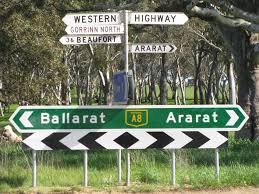 In the end, they had four children. They moved around country Victoria, he working for the State Government in the Soldiers Settlement Scheme, finally ending up in the small town of Beaufort.
In the end, they had four children. They moved around country Victoria, he working for the State Government in the Soldiers Settlement Scheme, finally ending up in the small town of Beaufort.
Charlotte Egan became one of the earliest members of the CWA and as well as raising a family worked as a volunteer for the Red Cross and other charities for all her married life. She was known for her cottage garden. “Stalwart” she was in every sense of the word.
Andy, who never regained the use of his left arm, died suddenly in 1953 and Aunt Chattie, as I knew her, outlived Andy by almost 50 years, dying at 101.
As my cousin wrote about her father and his sisters growing up during the Great Depression “They lived the country life-style with wood burning stoves, home baked bread, roast dinner, a cow to milk and butter to churn.”
In 1992, I was asked by the Victorian Department of Health to review a number of small country hospitals including the one where my Aunt Chattie resided; one where she had spent a considerable time on its Auxiliary. When I was there I went to see her; she was then 100. She turned to me and with these direct words of quiet reproach, said: “You have not come here to close the hospital I hope, Johnnie.”
It was the same Aunt Chattie, who reproached little Johnnie for throwing a scone 45 years before at Great Aunt Mildred.
The hospital remains open today.
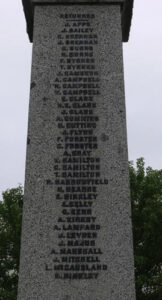
Andy Campbell’s name is on the War Memorial in Edenhope as it is with those of his brothers also on the one in Harrow. These are small towns near the South Australian border where Andy Campbell grew up and later worked.
One Anzac morning I happened to be in Edenhope. I was alone standing in front of the War Memorial. It was a cold morning with clear skies streaked with red. It was a strange sensation that I, a person who abhors war and thinks Anzac Day commemoration is overblown, should be standing at dawn to honour Uncle Andy on that day in April.
But then Uncle Andy did not think war was much chop either.
The Day My Belt Broke – an Australian at the Antiques Roadshow
The hardy BBC perennial show has been yet another casualty of the Covid-19 pandemic. It has been cancelled in 2020.
I am an antique Antiques Roadshow tragic. Fiona Bruce has been the presenter since 2008. She exudes charm; how she handles the gormless, how she handles tragic situations – all are confronted with a degree of appropriate equanimity and sympathy.
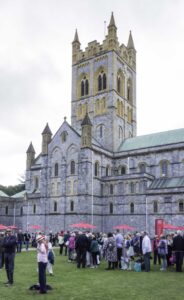
The TV show has been brilliantly devised because so many of the long time presenters are so idiosyncratic and of course the locations for the shows are carefully selected. I happened to be looking at the program early in 2018, and saw that the last Antiques Roadshow would be at Buckfast in Devon in the grounds of the Benedictine Abbey. Buckfastleigh, the adjoining “ancient woollen town” was where I could trace my maternal line back seven generations.
Too good an opportunity to pass up! Since I was going to be in the town for the Roadshow I decided I would pose two modest questions about my submitted items: was that New Zealand silver on the 19th century greenstone boot hook and was that Australian gold decorating the carnelian brooch?
However, the program organisers seemed not interested.
On impulse I decided to present a spurtle to Fiona Bruce – something Australian. So, given her Scottish name, I bought it, a Scottish porridge stirrer, made on the west Coast of Tasmania from Huon pine – a quirky gesture.
We arrived around 10 in the morning – there were already long queues. We were assigned to the “Miscellaneous” queue. For TV, queues are shown as an interactive experience, with Fiona often moving along the line. The reality is that you just shuffle along for three hours, although it must be said that the Poms are unfailingly cheerful at this event.
Eventually, we were diverted to Hillary Kay with our 1912 diorama of Canberra because as a naturalised Australian she knows “us colonials”. The less charming expert to whom we were initially sent was very offhand and uninterested in our offerings, but at least she did send us over to Hillary.
The first thing Hillary said was that I looked “reasonably respectable” and could I mind her handbag. Then she disappeared for 20 minutes. When she came back, she was just as she appears on screen – charming, frank, informative, with a sharp-edged smile.
She admitted she had no clue about either the value of this long scroll or its purpose, but believed it was a significant piece of Australiana. Australiana mostly had little market in the United Kingdom. We had a pleasant conversation even though probably I could have met her in Sydney if I had bothered to work out where or if she consulted there.
As for Fiona Bruce, just after we had arrived in the morning we had been directed to the producer for a possible spurtle handover. “Yes Fiona would be delighted to meet and receive the spurtle”, with the addendum that it would be “off camera”. But drat – the spurtle was left in the car – and the moment was lost. “Yes we could come back later” – “yes around 1 to 2- Fiona tends to leave about 4”, but as the day wears on then everybody becomes consumed with the unexpected and then your request becomes an irritation … when I later enquired of the producer I was told “no time soon”. The moment passed and I penned a note and left the spurtle with the BBC.
However, at that point any lingering thought of staying on the off chance of meeting Ms Bruce was dashed when my belt broke – and now I was truly disabled. Trying to keep one’s trousers up when one is walking uphill with two canes takes one to new level of disability.
So there we were – missed out on meeting Fiona Bruce – but then one of the great disappointments of my life was not meeting Zhou-En-lai either in Beijing in 1973, but that is another story.
Give me Land, lots of Land…
Hundreds of cases are believed to have emanated from an après-ski restaurant and bar in Ischgl, a resort town in Austria. You can see a video of the carousing at the alleged establishment, where there’s nothing but close quarters boisterousness and singing.
Why is singing significant? One 2019 study published in Nature’s Scientific Reports found that “the rate of particle emission during normal human speech is positively correlated with the loudness (amplitude) of vocalization.” It also found that “a small fraction of individuals behaves as ‘speech superemitters,’ consistently releasing an order of magnitude more particles than their peers.” In its review of the literature, it also offered wild facts like this: Saying “aah” for 30 seconds releases more micron-scale particles than does 30 seconds of coughing. That may be why weddings and funerals and birthday parties and church services of all sorts have been central to outbreak anecdotes. As for drinking establishments, a quiet pub with a bit of space between customers probably isn’t going to see a lot of people infected at once. But a rowdy spot in the Alps? A lot of infections. Shared vocalization is a magical thing in normal times, but these are coronavirus times. Even a cough-along is looking safer than a sing-along.

This quote is comes from a recent issue of Vanity Fair, and is timely for proponents of opening up the snow fields.
What the virus has taught us is that space is important, but is this not an absolute. Snowfields provide space, but not the lodges, which are not necessarily built for spacious relaxation.
While the upper crust ski set might enjoy spacious accommodation, much of the rest of the skiing experience is crowded bars, lift lines and chairs. Combine that with close contact with the ski slopes workers who live in very close quarters, and a highly contagious virus has an ideal setting in which to spread.
In Victoria Mr Virus No 13 was one of the early ones to be infected by the virus on his way through the United States. He infected his wife who was a teacher, and in turn one of her colleagues who shared an office with her contracted the virus. There was one other case at the school, a boy who had recently returned from China, with whom she had no contact. The school online chatroom was full of thrashing about – no one knowing what to do. Their three children were not positive on testing – two being pupils where she taught.
The instinctive reaction is to flee home, lock the doors and turn it into a fortress to defend Olivia and Christian from the risk of contracting the disease. Home schooling is rapidly constructed. Then TV arrives and we have pictures of the domestic Elysian Fields where Olivia and Christian are seen hard at work on their own personal laptops carefully spaced around the island bench in the kitchen, and home is portrayed as a uniformly happy environment.
If long-term home schooling were the answer why have schools? What is emerging in Australia is a frayed attitude to schools.
For those whose parents have employment then the school becomes a de facto childcare centre. Is that what schooling is about? What about the family in the working class area where both parents are unemployed and the children are at home. Do they go to school as part of a welfare system to escape the threat of domestic violence, ever present at home?
The problem with selective schooling is the loss of the objective –universal education. Because as shown in those parts of USA where education is rudimentary, one of the pillars of civilisation is severely loosened.
In Australia the school situation provides the basis of an observational trial. Inevitably political fingers cannot be kept to themselves and thus any data collected will be contaminated.
Three States are opening the schools up; two are opening up cautiously; and three are favouring keeping children away except for exceptional circumstances.
Given that the major factor in spreading the virus in schools is probably the teacher staff room, I can understand why the health authorities are cautiously supporting fully opening the school. Children seemingly develop a mild form of the disease, but it was not so when I lived through a polio epidemic. So educational strategies where widespread disease threatens must be robust but flexible.
Shroud-waving teachers stigmatise their profession by saying that they cannot convert the current situation into a new routine. Dream on, the world and everyone in it will have to live with the virus, a vaccine is not coming soon, and thus society must develop the ability to work in a different space with scrupulous hand hygiene and regularly cleaning of the classrooms and making sure the school toilets are maintained and not pig sties covered in disgusting graffiti.
The toilet is literally the seat of good hygiene, where it is imperative to maintain the soap/sanitiser and have a working drier. The traditional paper hand towel should be banished. Schools will need to employ people to ensure that an even standard of hygiene is maintained as well as the cleanliness of the ablution block, whether it be the poshest or the most working class of schools.
This approach to hygiene has to be embedded in the school culture and in the teaching profession, rather than complaining that the virus is not one’s personal responsibility. Nobody should be allowed in the school with any signs of respiratory disease. If by chance they are, all school should have a school nurse, someone able to be kitted up and quarantine both the sick child and teachers until they are able to go home or to a health care centre.
When it is expressed in this way, it means not letting children go back to school and leave it that – it means a wholesale change in the physical school arrangements over time. There would be nothing more worthwhile in the life of a medical or nursing student than to spend a few weeks in a school assuring cleanliness even if it meant that they had to clean out and maintain the cleanliness of the latrine. This would provide some useful understanding of basic practical public health.
This pandemic is not a casual event; the World has been fortunate to have dodged the contagion for so long, given how many epidemics have threatened.
A country that trashes education, a country that trashes health and hygiene is a barbaric State. Just ask Donald Trump.
Mouse whisper
An H5N1 strain of bird flu influenza virus emerged in Southern China in 2006 (where else?). While it appeared in chickens, the super-spreaders were shown to be ducks. The one that initiated it all was Donald, the greatest super-spreader the world has ever known. It was seen quacking all over Southern China – rose gardens, high golden towers – everywhere, its distinctive vermillion tail twitching – a sight to see.
And then it vanished. Nobody knew where it went. But they say it was a dangerous virus Donald carried, capable of doing anything, even being able to convert its carrier into a different species. The most powerful and destructive virus ever isolated in modern civilisation it is said, but then nothing as a result has ever been greater than Donald the Quack.
